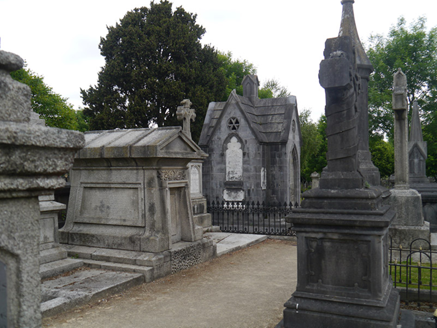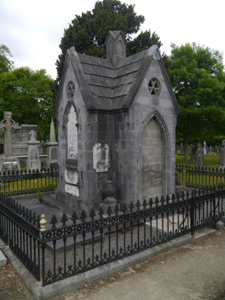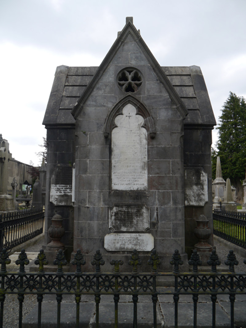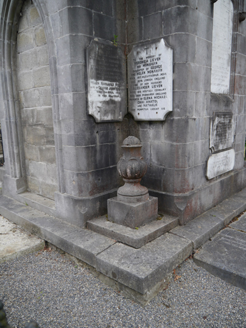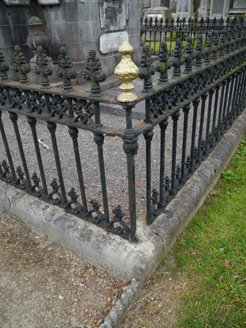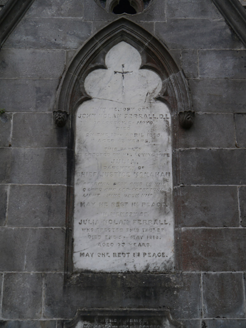Survey Data
Reg No
50130100
Rating
Regional
Categories of Special Interest
Architectural, Artistic, Social
Original Use
Mausoleum
In Use As
Mausoleum
Date
1850 - 1860
Coordinates
315052, 236914
Date Recorded
12/06/2018
Date Updated
--/--/--
Description
Freestanding cruciform-plan Gothic Revival funerary mausoleum, erected c. 1855, in form of chapel over vault. Steeply pitched offset limestone roof with saddleback verges and closed gableted lantern to centre; and with corniced eaves. Ashlar limestone walling over plinth with stop-end chamfered corners. Cusped lancet openings to north, south and west elevations, having chamfered reveals and sills, hood-mouldings with foliate stops; cusped triple-trefoil roundels above; opening to west infilled with concrete block; openings to north and south having inscribed marble tablets. Pointed-arch doorway to east, having pole moulded surround, infilled with concrete block. Marble inscription panels fixed to southwest, northwest and northeast corners. Rectangular base having urns on pedestals to each corner. Set in rectangular enclosure, on limestone platform, with gravelled perimeter, and bounded by decorative cast-iron railings on cut limestone plinth. Located in early, eastern part of Glasnevin Cemetery.
Appraisal
A well-proportioned Gothic Revival monument, erected by James Henry Monahan (1803-78) in memory of his wife Fanny and subsequently memorializing several other members of the family. Monahan was one of the outstanding judges of his time and one of the first Catholics to achieve judicial eminence. He held office as Attorney General for Ireland and Chief Justice of the Irish Common Pleas, and briefly represented Galway in the House of Commons. The monument is in the form of a simple Gothic chapel over the family vault, characterized by restrained detailing, including simple pointed-arch openings, and urns placed to corners. Originally known as Prospect Cemetery, this burial ground was opened in 1832 following a successful campaign by Daniel O'Connell to establish Dublin's first civic, non-denominational cemetery. The monument is one of a cluster of architecturally notable memorials in this early part of the cemetery, which was known as Curran Square, offering premium plots that reflected the status and social standing of those interred there during the early decades of the cemetery's operation. This monument contributes to the architectural and stylistic variety of the Cemetery.
